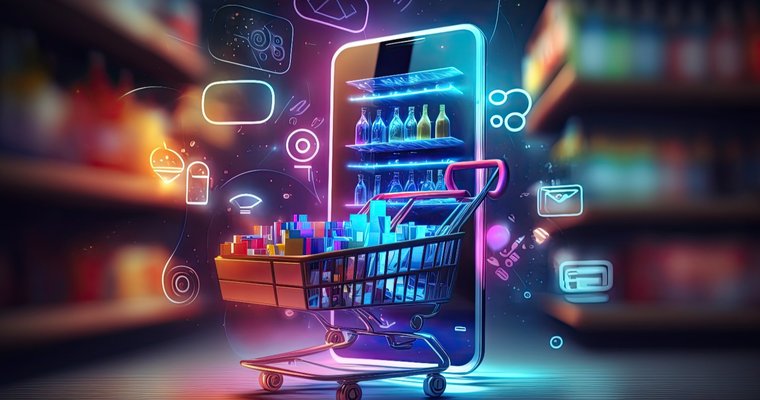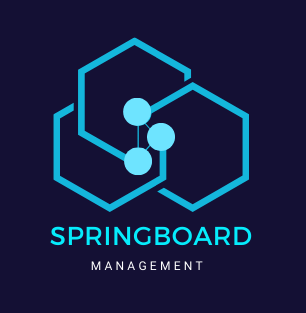
Beyond Data and Dollars: How CPG Leaders Win in the New Retail Media Economy
Share
For decades, the rules of growth in consumer packaged goods (CPG) were straightforward: build distribution, secure shelf space, invest in brand equity, and scale. But the old playbook is breaking down. Today, growth is being shaped by two new forces that are rewriting how brands compete, and they’re converging faster than many organizations are prepared for.
The first is retail media. Once an optional marketing experiment, it has become the new price of admission (the cost of visibility, relevance, and even access to consumers). The second is data. Once a competitive advantage, it’s now the starting line. Every brand is swimming in more information than ever, but only a few are turning that data into meaningful business outcomes.
The message from industry leaders at this year’s Groceryshop conference was blunt: you can’t win without data. But I will add, you also can’t win with only data. Success now depends on pairing strategic investment with analytic agility, and knowing how to turn signal into strategy.
Retail Media: The New Cost of Entry
In the old retail world, winning meant negotiating for premium shelf space or end-cap displays. Today, that shelf is digital, and the new gatekeepers are retail media networks (RMNs) like Amazon Ads, Walmart Connect, Kroger Precision Marketing, and Target Roundel.
These platforms allow retailers to monetize their most valuable asset (shopper data) and brands to reach consumers closer to the point of purchase than ever before. But they’ve also changed the economics of doing business.
Participation is no longer optional. According to FMI, CPG brands are expected to spend more than $26.6 billion annually on retail media by 2026, with grocery retail alone accounting for nearly $6.7 billion. As one executive at Groceryshop put it, “Retail media is the new slotting fee.”
That reality is reshaping brand strategy. Retailers increasingly expect media investment as part of joint business plans, and those who don’t participate risk losing visibility, leverage, or even distribution. But leading brands aren’t treating this spend as a tax, they’re using it as a growth engine.
Choosing Partners That Matter
Because retail media is now a cost of entry, the strategic question isn’t if you should invest, it’s where and how.
The smartest brands are moving from “spend everywhere” to “spend where it matters,” carefully selecting partners whose audiences, capabilities, and data transparency align with their growth objectives. They’re asking sharper questions:
- Which retailer’s audience most closely matches our growth target?
- Which networks give us the cleanest data for measurement and optimization?
- Where can our investment unlock broader collaboration beyond advertising such as co-created shopper segments, shared innovation pilots, or category growth initiatives?
Consider how PepsiCo approaches retail media partnerships. Instead of spreading spend thinly, the company prioritizes deep collaborations with key retail partners, using audience insights to tailor campaigns and launch targeted promotions. These partnerships often go beyond ads, influencing pricing, assortment, and even product innovation.
The result is a shift from transactional media buying to strategic co-creation. Retail media isn’t just a cost of entry anymore, it’s a platform for growth.
Data Is Table Stakes, Insight Is the Advantage
All this investment has created a flood of new data: clickstream behaviors, loyalty trends, path-to-purchase patterns, and real-time sales signals. But here’s the uncomfortable truth: data alone no longer differentiates. Every brand has it. Most brands underuse it. And some brands are paralyzed by it.
A recent McKinsey study found that while nearly all major CPG companies have expanded their analytics investments, fewer than 20% consistently translate data into commercial decisions at scale. The issue isn’t a lack of dashboards, it’s a lack of capability.
To win in this environment, brands need teams that can:
- Synthesize disparate data sources into cohesive stories that explain why something is happening, not just what happened.
- Translate complex signals into actionable business recommendations tied to pricing, promotion, and innovation.
- Activate insights quickly enough to influence in-flight decisions, not just postmortem reviews.
This is a fundamentally different skill set from the traditional reporting and analytics roles many companies are used to. It blends commercial strategy, behavioral science, and data literacy, a combination that remains scarce in many organizations.
From Data to Decision: Insight in Action
Some of the most successful CPG brands are already mastering this “insight-to-impact” loop.
Take Colgate-Palmolive. The company is building digital twins (virtual representations of consumer segments) to test new product ideas and marketing messages before they hit the shelf. That approach doesn’t just save time and money; it ensures that product development and go-to-market decisions are grounded in real shopper behavior, not assumptions.
Or look at how Nestlé uses data from retail media campaigns to refine innovation strategy. By analyzing granular shopper signals from its Amazon and Walmart activations, Nestlé has been able to identify emerging preferences (like demand for portion-controlled snack packs) early, then adjust its portfolio strategy before competitors catch up.
These examples highlight a key point: data only becomes valuable when it changes what you do next. And the difference between brands that simply report on data and those that act on it couldn’t be more stark.
To see how this plays out in practice, consider two fictional CPG companies, both with access to the same retail media data, shopper insights, and sales reporting.
Company B collects the same data, but approaches it differently. Their analytics, commercial, and marketing teams work as one, turning raw inputs into daily decisions. Campaign performance triggers real-time adjustments. Shopper trends detected in retail media data are routed directly into assortment planning and product innovation. Insights don’t just inform; they initiate action.
The result? Company A has reports. Company B has results.
Where the Two Worlds Collide
This is where retail media strategy and insight capability intersect, and where the next generation of competitive advantage will be built.
Retail media gets you access, but insight gets you traction. Data gives you a view, but decisions drive growth. The brands that succeed will be those that treat retail media not just as advertising, but as a source of intelligence, and then turn that intelligence into action across pricing, innovation, channel strategy, and supply chain planning.
Consider a pet care brand working with Kroger Precision Marketing. Instead of simply buying ads, they analyze campaign data to identify an emerging segment of premium treat shoppers. Armed with that insight, they don’t just adjust creative, they launch a new product line, tailor pricing to the segment’s spending habits, and negotiate additional shelf space. That’s the data-to-decision flywheel in action.
The New CPG Playbook
To compete in this new environment, CPG leaders should ask three critical questions:
- Are we treating retail media as a strategic lever or just a cost of doing business?
- Are we investing as much in capability (turning data into decisions) as we are in collection?
- Do our teams have the commercial, analytical, and strategic skills needed to translate signal into strategy?
Those who answer “yes” will set the pace for the industry. Those who don’t risk being outpaced by competitors who can do more than just collect data, they can act on it.
Final Thought: Access vs. Advantage
The CPG industry is entering a new era. Retail media buys you access, but insight buys you advantage. Data will continue to be abundant, but the ability to turn it into decisions will remain rare.
The brands that thrive will not be those with the most data or the biggest budgets. They will be those that can connect investment to intelligence, and intelligence to impact, faster than anyone else.
Because in this new economy, data isn’t the destination, it’s the beginning of the work that drives growth.
Sources:
- FMI: Retail Media’s Rise Is Reshaping Grocery
- eMarketer: Incrementality Equation: Solving Retail Media ROI Challenges
- McKinsey: Fortune or Fiction: The Real Value of a Digital and AI Transformation in CPG
- Reuters: Colgate Testing New Product Ideas with Digital Twins
- Bain & Company: Consumer Products Report 2025: Reclaiming Relevance in the Gen AI Era
